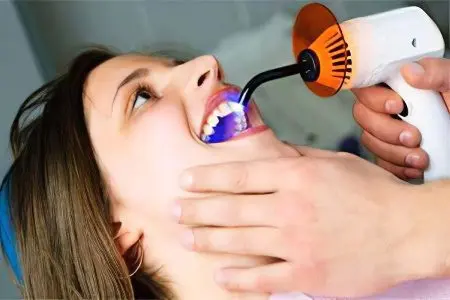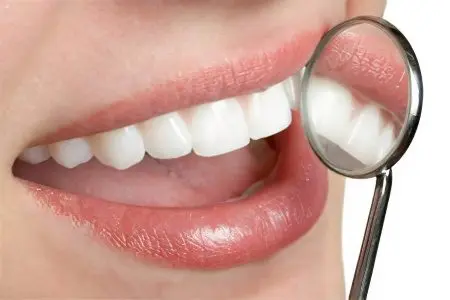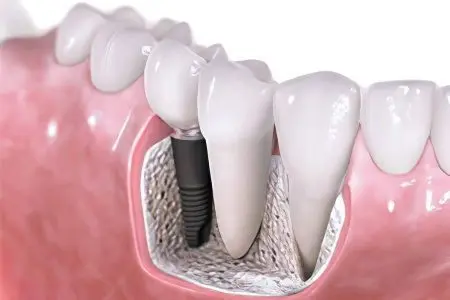Contents
Modern methods of dental treatment
Dentistry is one of the areas of medicine where modern scientific technologies are being introduced most actively. The first drill, with which attempts were made to drill bad teeth, appeared in the Roman Empire. Since that time, progress has stepped far forward and now teeth can be treated quickly, painlessly and effectively.
The dentist’s office should no longer be terrifying, and a modern dental clinic, although it is a medical institution, undergoing treatment in it is a painless procedure, regardless of the amount of intervention.
1 Laser dental treatment without pain

Laser dentistry is one of the modern dental therapies that can solve almost any problem in the oral cavity.
The procedure is reduced to the following steps:
The doctor performs a laser beam scan of each tooth, revealing all carious areas. Thanks to laser diagnostics, even the smallest damage can be detected and repaired.
After determining the amount of work to be done, the doctor points the laser beam at the damaged area. It acts gently, as it passes through an air-water jet before it hits the tooth. There is no risk of bleeding with this treatment, as the laser instantly cauterizes the blood vessels (if a gum incision is required).
The tooth cavity is 100% cleared of pathogenic bacteria using a laser beam.
The seal is fixed almost instantly, in just 20 seconds.
The laser beam can be used for the treatment of gingivitis, periodontitis, gum disease, periodontal disease. (read also: Gum disease and its prevention)
With the help of a laser beam, the following problems can be solved:
Cure caries with full preservation of healthy tissues.
Get rid of bleeding gums.
Get rid of bad breath by eliminating all harmful bacteria.
Cure pulpitis and periodontitis.
Painlessly cure ulcers, fibroids and other neoplasms.
Relieve tooth sensitivity.
Perform dental implantation, during which the laser beam will be used as a scalpel.
Benefits of laser dentistry:
Painless procedure;
No risk of infection, since there is no direct contact between the instrument and the tissue;
100% disinfection of the treated area;
No risk of bleeding;
Rapid tissue regeneration;
High accuracy of all manipulations;
Lack of noise exposure, smell, heating, that is, a minimum of stressful stimuli.
Disadvantages of laser dentistry:
The high cost of the procedure;
Lack of qualified personnel to work with laser equipment in municipal clinics.
2 Dental treatment with the ICON method (Ikon)
The Aikon method of dental treatment boils down to the fact that caries will be removed in one visit to the dentist, if we are talking about an early stage of its development. This does not require the use of a grinder. The abbreviation ICON stands for the concept of infiltration, i.e. the concept of gentle dental treatment.
The therapy is based on the fact that a light-composite material penetrates into the porous structure of the tooth, which seals its open surface.
This material is also called liquid filling. The procedure is carried out in several stages:

The tooth to be treated is isolated with a thin latex film.
A special gel is applied to the tooth, which allows you to open the pores in the zone of carious lesions.
The tooth is dried with warm air.
The infiltrate is applied to the damaged area twice.
The applied infiltrate is illuminated so that the liquid hardens.
The latex film is removed.
The tooth is polished to achieve the smoothness and brilliance of the enamel.
Benefits of Ikon dental treatment:
Caries in the made tooth will no longer occur;
“Living” tooth tissues remain intact;
No need for anesthesia;
The method is suitable for the treatment of milk teeth;
There is a possibility of treatment in patients with braces;
It is possible to use the method during pregnancy.
The disadvantage of the method is that it is possible to treat caries only at the initial stage of its development, that is, at the stage of a superficial spot.
3 Dental treatment with ozone
Dental treatment with ozone is based not on the removal of affected tissues, but on their disinfection, since ozone is the strongest oxidizing agent. Penetrating inside the tooth, the smallest ozone molecules destroy up to 99% of all pathogenic microorganisms. After the tooth is treated with ozone, the enamel is coated on top with a special remineralizing composition.
Procedure progress:
A special cap is attached to the damaged tooth.
Air is pumped out from under the cap, creating an environment close to vacuum.
For 30 seconds, ozone is supplied to the tooth, which destroys all pathogenic bacteria.
Benefits of ozone dental treatment:
The possibility of performing treatment without the use of a drill;
No allergic reaction;
Complete sterilization of the tooth;
The speed of the procedure, 30 seconds is enough to process one tooth.
Disadvantages of ozone dental treatment:
Most often, you still have to drill a tooth to remove tissues that cannot be disinfected;
Mostly, ozone treatment is used in pediatric dentistry.
Other dental treatments
4 Dental implantation

Dental implantation is the replacement of the roots of a tooth lost for one reason or another with the installation of a specialized structure that is embedded in the jaw bone tissue. The installation of an implant makes it possible to restore the dentition with the help of subsequent prosthetics.
Modern dentistry for dental implantation uses such material as titanium and its alloys.
Implanted teeth look completely natural, and a non-dental specialist will never understand that a tooth is artificial. The service life of implants is 10-20 years.
5 Veneers for teeth
Dental veneers are installed to improve the appearance of the dentition. Veneers are porcelain or composite plates that are bonded to the outer layer of tooth enamel. As a result, the teeth acquire an ideal shape, become strong and cannot be distinguished from natural ones.
Veneers help to correct existing irregularities, stains and chips on the enamel, remove interdental spaces and solve a number of other aesthetic problems.
Veneers are custom-made for each patient based on a cast of their own teeth. After their manufacture, the doctor attaches the veneers to a special cement, which instantly hardens under the influence of a special light.
6 Dental prosthetics
Dental prosthetics is a process that allows you to completely restore the structure of a tooth after it has been removed. With the help of prosthetics, you can restore the teeth of the upper and lower jaw.
There are the following types of dentures:
dental crowns;
bridge prosthesis;
Implants;
Veneers;
Fixed dentures;
Removable dentures.
Depending on what type of prosthetics the patient chooses, the features of the procedure will differ.
7 Photo seals
A photo filling is a type of filling that consists of a composite mixture. It contains a paste that helps to destroy pathogenic microorganisms. The photo filling hardens in the tooth under the influence of ultraviolet radiation.
The use of photofilling allows you to restore the tooth in layers, giving it the necessary shape and color. After hardening, the material becomes hard and durable, it is resistant to cracks and has a reliable bond with the enamel. If a chip is formed on the filling, or its delamination occurs, a complete replacement will not be required, it will be enough to perform an adhesive correction in the dentist’s office.
Author of the article: Muravitsky Boris Viktorovich, dentist, specially for the site ayzdorov.ru









